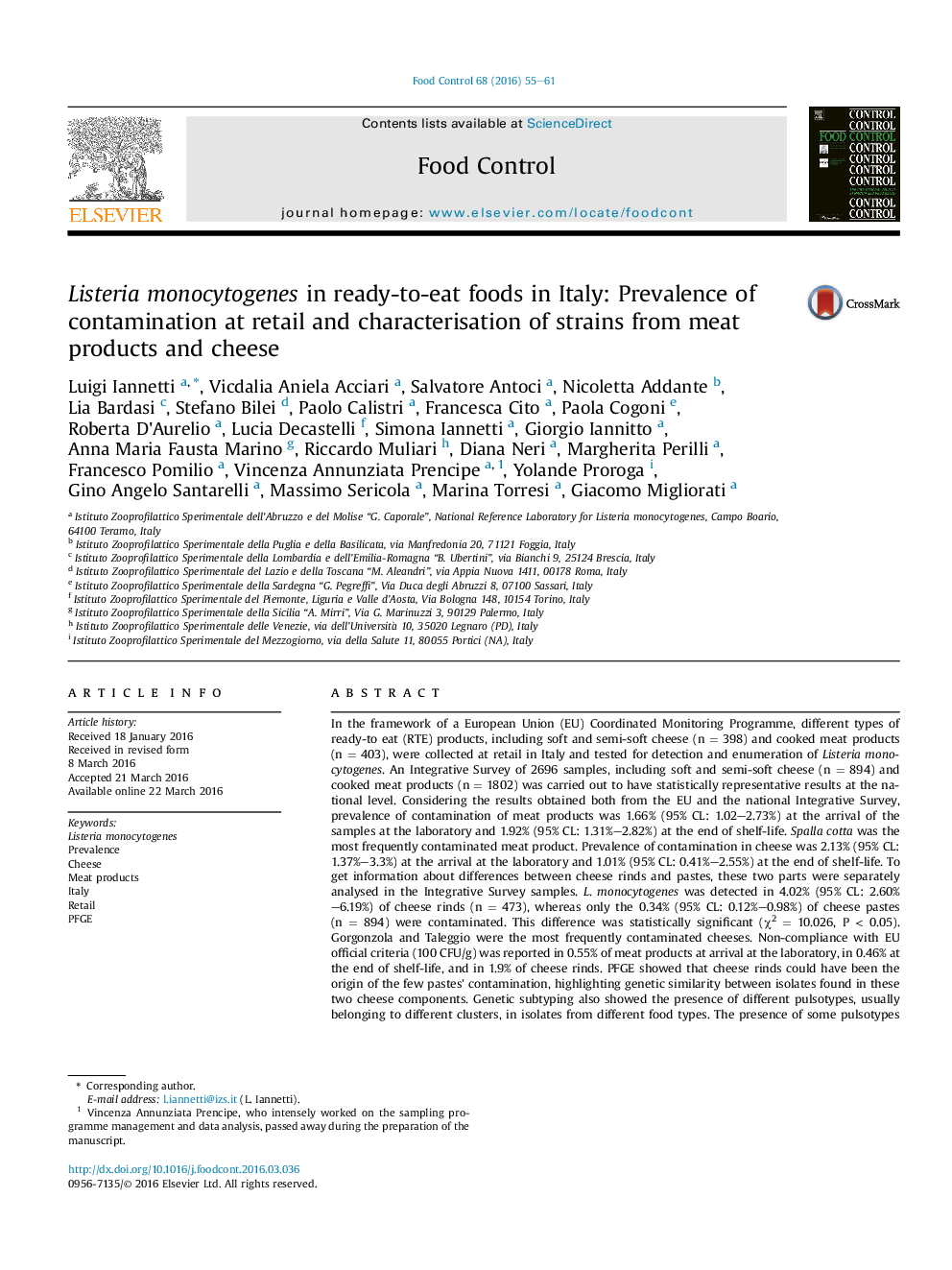| کد مقاله | کد نشریه | سال انتشار | مقاله انگلیسی | نسخه تمام متن |
|---|---|---|---|---|
| 4559022 | 1628394 | 2016 | 7 صفحه PDF | دانلود رایگان |

• Prevalence of Listeria monocytogenes at retail in different countries is necessary to evaluate exposure of consumers.
• We integrated the EU monitoring program with other 2696 samples of RTE cheese and meat products at retail in Italy.
• Soft and semi-soft cheese at retail in Italy are more contaminated than EU mean.
• Cheese rinds are more probably contaminated by L. monocytogenes than cheese pastes.
• Presence of prevalent pulsotype in products from the same establishment suggests environmental source of contamination.
In the framework of a European Union (EU) Coordinated Monitoring Programme, different types of ready-to eat (RTE) products, including soft and semi-soft cheese (n = 398) and cooked meat products (n = 403), were collected at retail in Italy and tested for detection and enumeration of Listeria monocytogenes. An Integrative Survey of 2696 samples, including soft and semi-soft cheese (n = 894) and cooked meat products (n = 1802) was carried out to have statistically representative results at the national level. Considering the results obtained both from the EU and the national Integrative Survey, prevalence of contamination of meat products was 1.66% (95% CL: 1.02–2.73%) at the arrival of the samples at the laboratory and 1.92% (95% CL: 1.31%–2.82%) at the end of shelf-life. Spalla cotta was the most frequently contaminated meat product. Prevalence of contamination in cheese was 2.13% (95% CL: 1.37%–3.3%) at the arrival at the laboratory and 1.01% (95% CL: 0.41%–2.55%) at the end of shelf-life. To get information about differences between cheese rinds and pastes, these two parts were separately analysed in the Integrative Survey samples. L. monocytogenes was detected in 4.02% (95% CL: 2.60%–6.19%) of cheese rinds (n = 473), whereas only the 0.34% (95% CL: 0.12%–0.98%) of cheese pastes (n = 894) were contaminated. This difference was statistically significant (χ2 = 10.026, P < 0.05). Gorgonzola and Taleggio were the most frequently contaminated cheeses. Non-compliance with EU official criteria (100 CFU/g) was reported in 0.55% of meat products at arrival at the laboratory, in 0.46% at the end of shelf-life, and in 1.9% of cheese rinds. PFGE showed that cheese rinds could have been the origin of the few pastes' contamination, highlighting genetic similarity between isolates found in these two cheese components. Genetic subtyping also showed the presence of different pulsotypes, usually belonging to different clusters, in isolates from different food types. The presence of some pulsotypes predominantly prevalent over the others, in products from the same manufacturer, could suggest environmental strains as the main source of contamination.
Journal: Food Control - Volume 68, October 2016, Pages 55–61